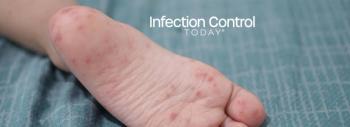
First Study Estimates Economic Impact of Dengue Illness in Americas at $2.1 Billion Per Year
The first assessment of the total cost of dengue illness in the Americas reveals the economic burden to be approximately $2.1 billion per year, exceeding that from other viral illnesses including human papillomavirus (HPV) and rotavirus. Results of the study conducted by Brandeis University were released in the February issue of the American Journal of Tropical Medicine and Hygiene.
Approximately 60 percent of this economic burden results from indirect costs mostly related to productivity losses affecting households, employers and government expenditures. Direct costs include ambulatory and hospital care. Estimates are based on five components: the number of reported dengue cases, the degree of under-reporting, the direct and indirect costs per case, the disability-adjusted life years (DALYs) burden per case and the countrys demographic information.
"Dengue is a growing human and economic burden worldwide and in 2009 we saw the first major outbreak in the continental U.S. in over 50 years," says Donald Shepard, PhD, of Brandeis University. "We know first-hand that regardless of where you live, we are all affected by dengue. At Brandeis, we lost a remarkable graduate, Mironda Heston, due to dengue while she was working in Haiti. In her memory, we are extremely dedicated and proud to contribute to a better understanding of this awful virus in hopes to better control it."
Dengue is the most common mosquito-borne virus in the world, recently reemerging in countries that were previously free of it. Globally, the projected number of annual dengue infections is estimated between 50 million to 100 million, with 24,000 deaths, mainly in children. When compared to the same countries, the economic impact of dengue exceeds that estimated for HPV, the most common sexually transmitted infection, and rotavirus, the most common cause of severe, dehydrating diarrhea among children worldwide.
"Economic impact studies are a valuable tool to help policymakers, scientists and health professionals assess the progress being made to control and eradicate diseases here and around the world," says Peter J. Hotez, MD, PhD, president of the American Society of Tropical Medicine and Hygiene. "As citizens of a global world, we cannot tolerate the continued pain and suffering that is caused by dengue. We must forge ahead with vaccine development and community control, participation and education campaigns."
Newsletter
Stay prepared and protected with Infection Control Today's newsletter, delivering essential updates, best practices, and expert insights for infection preventionists.






